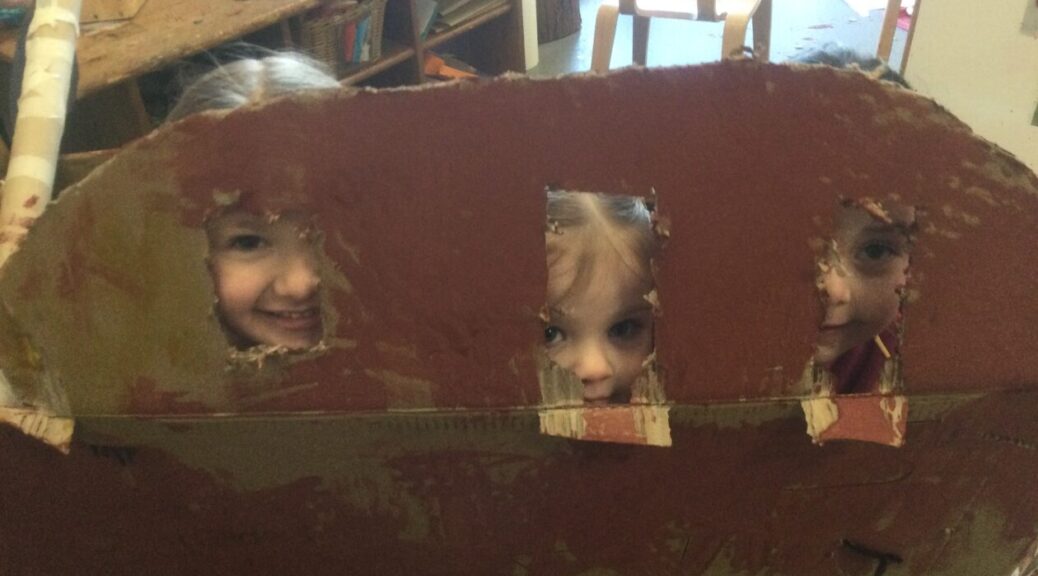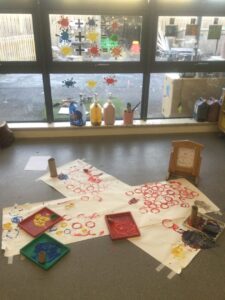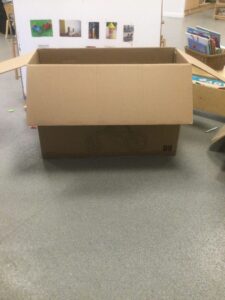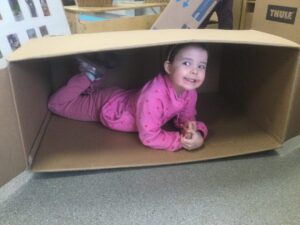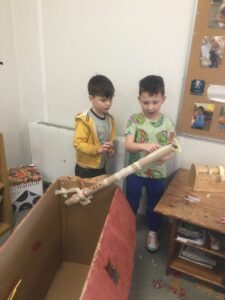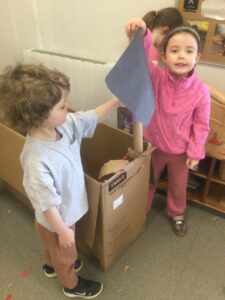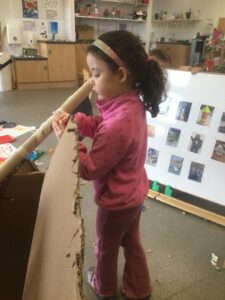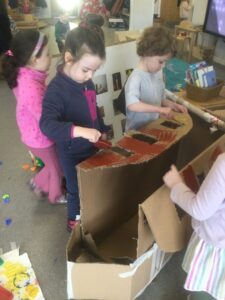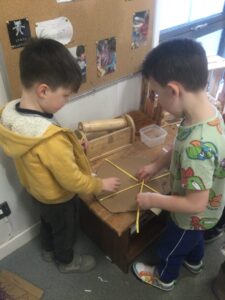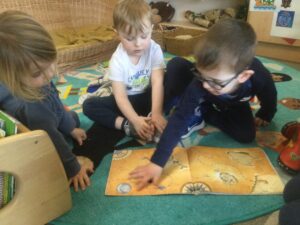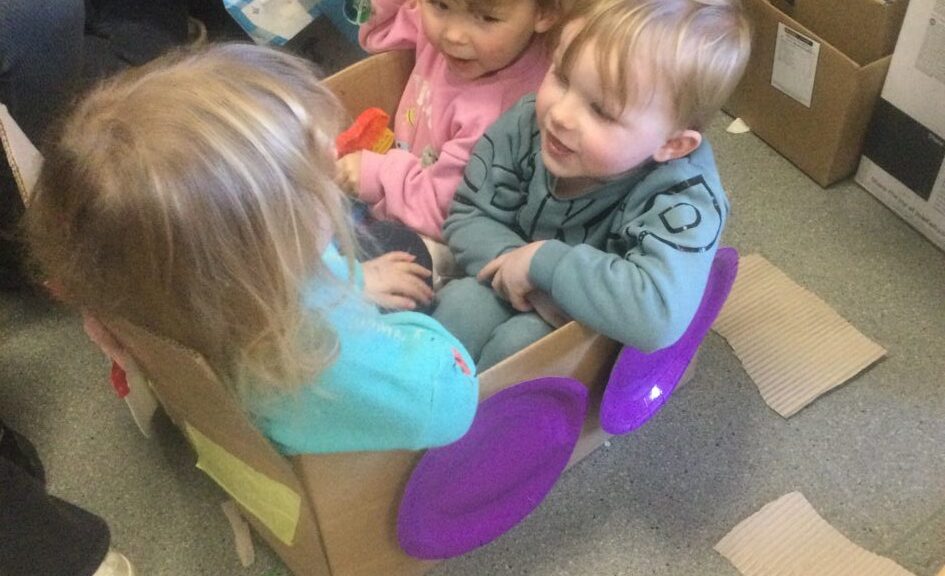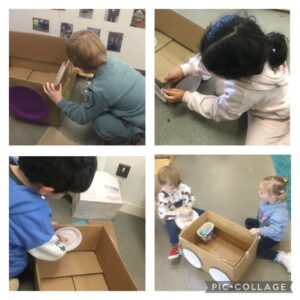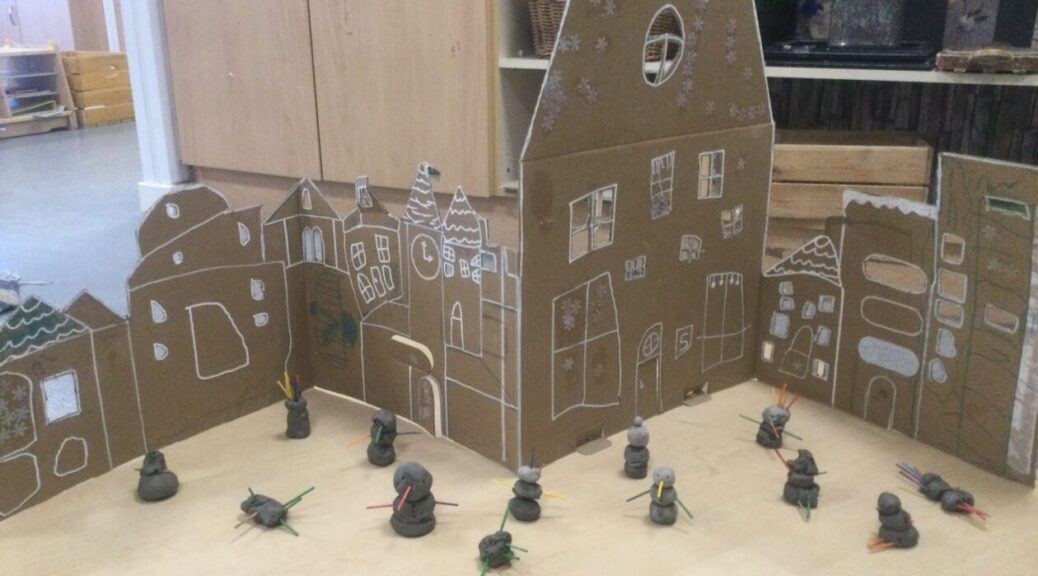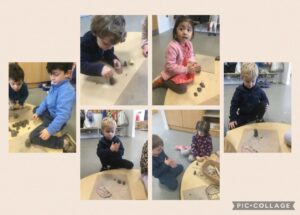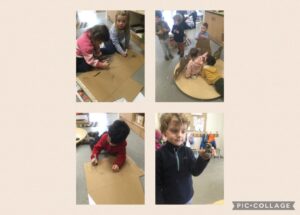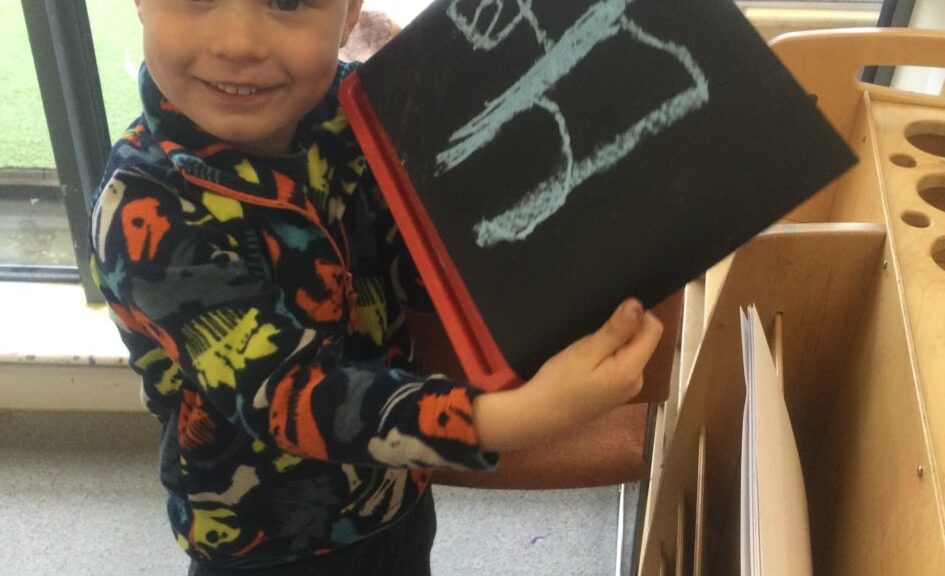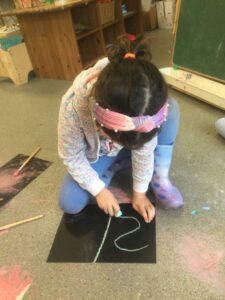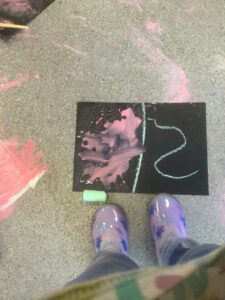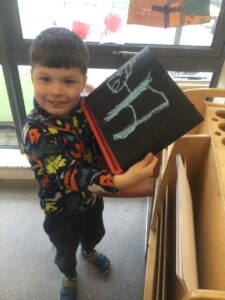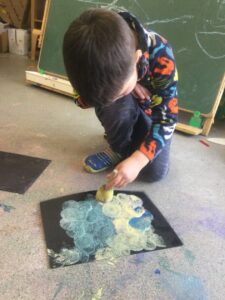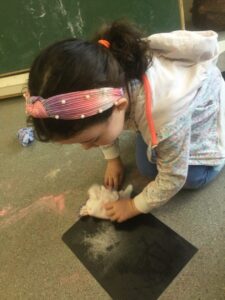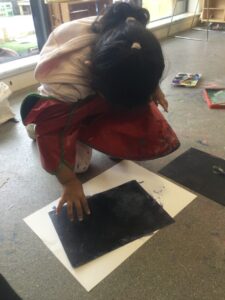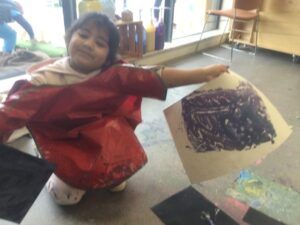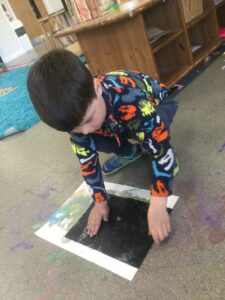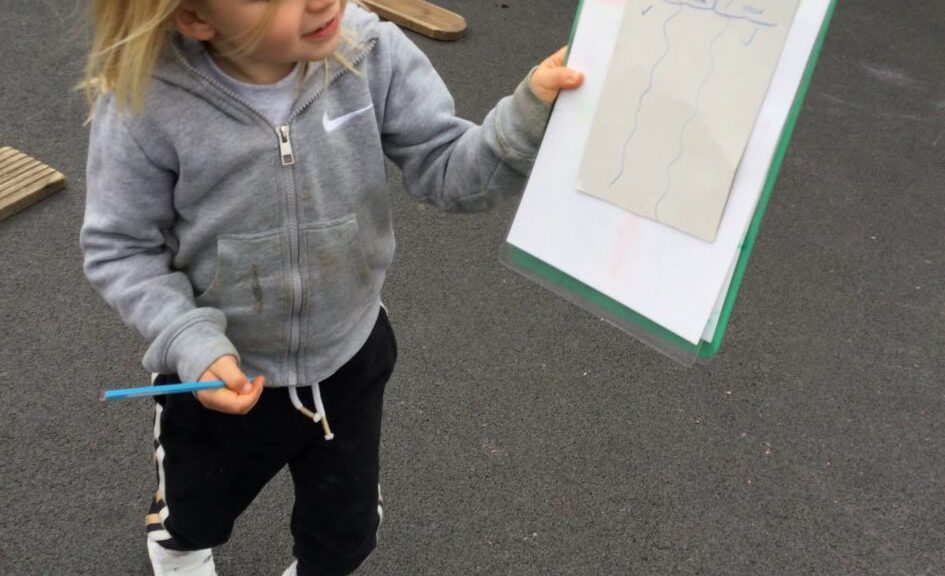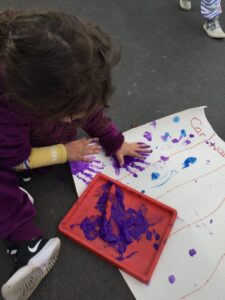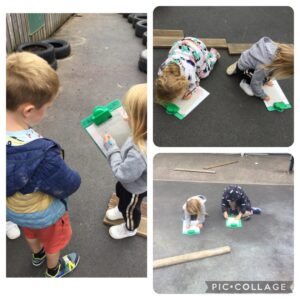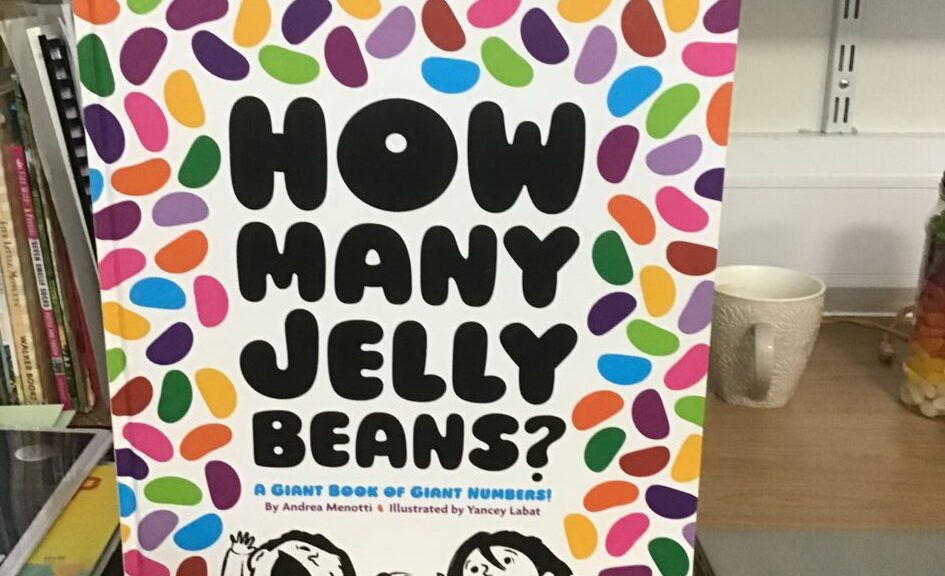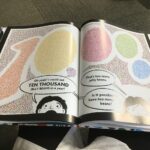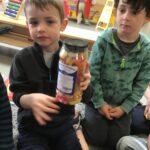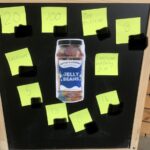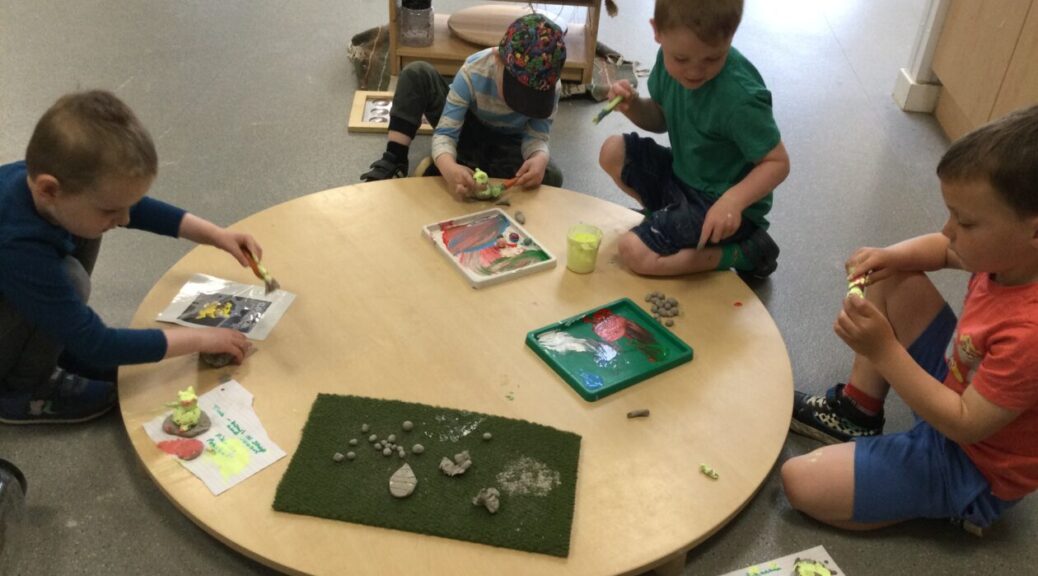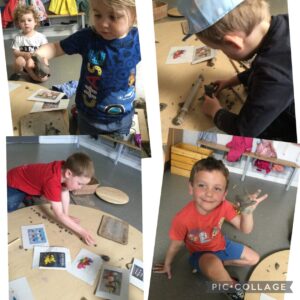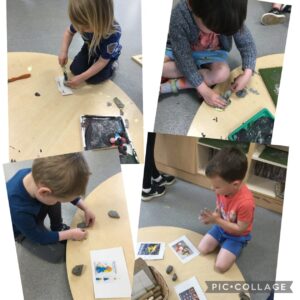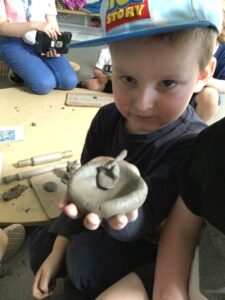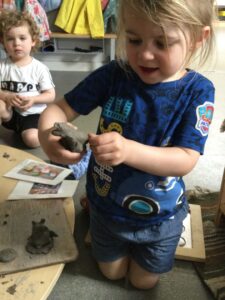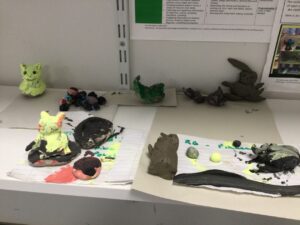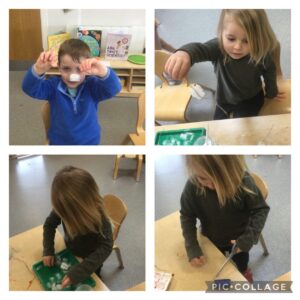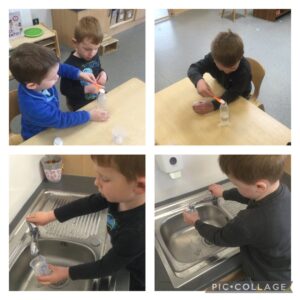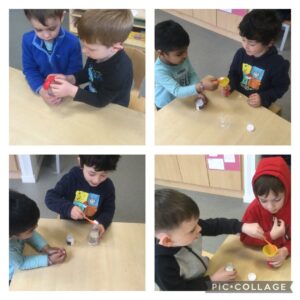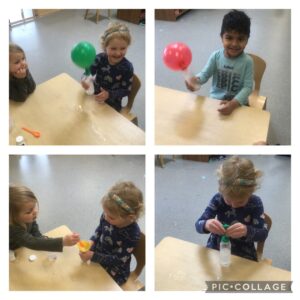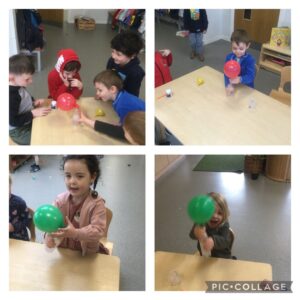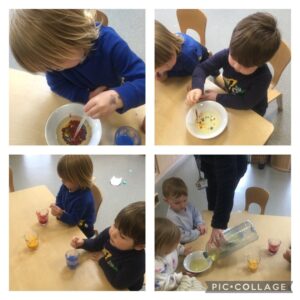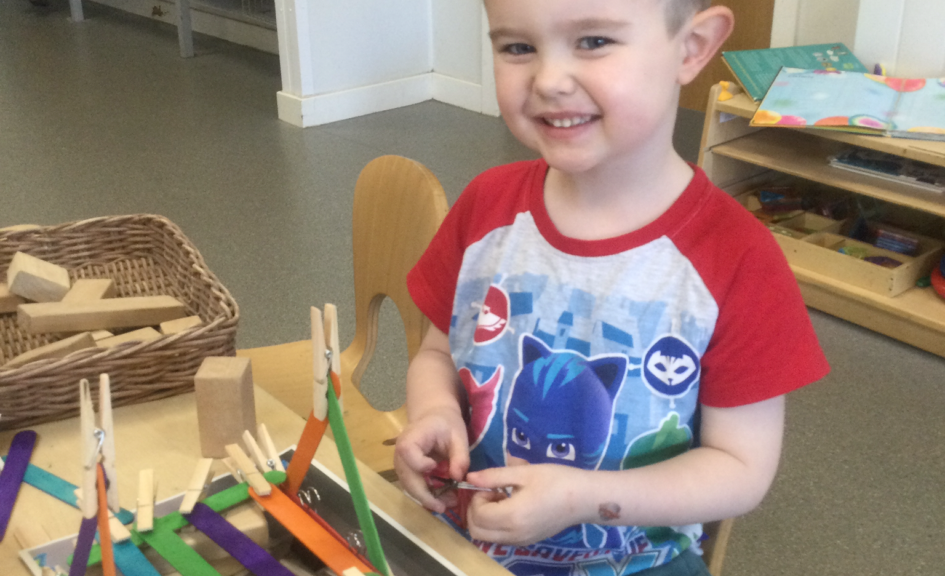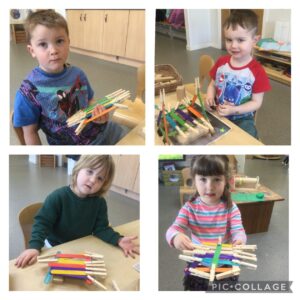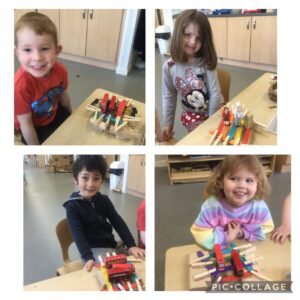This week in the creative area we have been exploring patterns. We have been using different utensils to create these patterns. Today we used different circular resources from our junk modelling area. We used tubes, corks and lids dipped in paint to make our spotty prints.
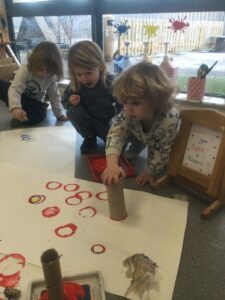
We noticed the paper was in the shape of an X. “X marks the spots.”
Meanwhile In our Junk modelling area we were gifted a large box.
We didn’t know what we could do with it. Could we fit inside?
Yes we could it was so big! If X marks the spot maybe we could make a pirate ship! We soon got to work. We used our technology skills to look for ideas for our ship on the iPad.
We decided we needed a pirate flag. We worked together to problem solve how to attach it to our ship.
Once we had secured it with tape and ribbon, we got to work making the windows and shape of the boat.
We used our safety skills to cut the box with scissors.
We needed to paint it next. It was such a huge box it took lots of us to paint it.
One of our children spotted that we can’t have a pirate ship without a steering wheel!
We used paper straws to make “the jaggy bits the pirate captain holds to drive the boat.” We tried lots of different ways to attach the wheel so we could still turn it. Luckily we tried pipe cleaners and it worked!

It was time to set sail on the seas to hunt for pirate treasure! At the writing table, we had the fantastic idea of creating a telescope for our adventures!
At group time today we found a book in the story area about pirates and decided tomorrow we will make a treasure map to give us directions to the treasure.
Our learning experience and ideas went on a journey and crossed all over the nursery today using different areas to add to our initial idea.
We can’t wait to see how our treasure maps turnout and if x really did mark the spot!

